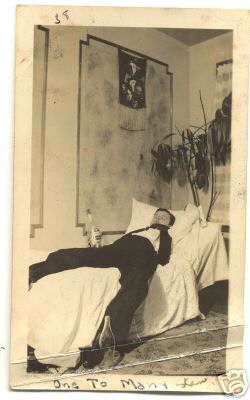Schwarz
View current page
...more recent posts
ellenville ny (woodstock area) bungalos
boneyard
oak barrels
wood tank forum
timber tanks
spa dome
1959 lancia flaminia touring gt coupe
go fast (site down)
The last ounce of hope for preventing new webcasting royalty rates from crippling internet radio on July 15 has been dashed by the U.S. Court of Appeals. NPR's request for a stay on the new rates was just denied.
This means that many webcasters, small and large, will go out of business, and non-commercial webcasters like WFMU may have to cap online listenership. The situation is dire, and it seems as though our only hope is to convince Congress to pass the Internet Radio Equality Act (even if they pass it after July 15). If you haven't already, please contact your Senators and Representatives. Visit savenetradio.org for more info.
lawn chairs are everywhere
via zoller
full cleveland
Tourists come here from all over the world to see the shop," says Ryan Titilah, shop manager. "It's like they're walking into the Sistine Chapel. It's the Sistine Chapel of skateboarding."
For much of the 1970s, the store was known as the Zephyr Surf Shop. The 2002 documentary "Dogtown and Z-boys" chronicled the achievements of a rag-tag group of teenagers who collected at the shop when the surfing was bad and went on to reinvent the sport of skateboarding as members of the Zephyr team, or Z-boys.
"[Our families] really didn't care where we went. Where we ended up was this building," says former Z-boy Paul Hoffman. "This was our home. This was where we hung out. Skip Engblom and Jeff Ho were our dads."
Shop owners Ho, Engblom, and Craig Stycek gave the boys odd jobs and helped them build skateboards. New polyurethane wheels allowed the boys to adapt their surfing moves to the cement, and the partners encouraged them to practice and to invent new moves. In 1975 they sponsored a team of 11 boys and one girl to compete in the Del Mar Nationals, where the Z-boys blew away the competition with their aggressive surf-skate style.
In May, the Santa Monica Landmarks Commission officially landmarked the portion of the 1922 building that houses the surf shop based on its cultural, rather than architectural, significance. The commission first reviewed the building in October after the owner filed for a demolition permit as part of a plan to build a "green" 14-unit apartment building with underground parking and retail space.
rip ladybird johnson
dum da dum dum
THE FABCHAT BOARDS ARE TEMPORARILY DISABLED WE ARE TRYING TO RESOLVE PROBLEMS ASSOCIATED WITH MASSIVE AMOUNTS OF SPAM THE BOARDS WILL BE BACK UP A.S.A.P. THANK YOU FOR YOUR PATIENCE AS WE STRIVE TO FIX THIS PROBLEM.
top gear odd vehicles
via zoller

Win the book, Glass House, edited by Toshio Nakamura, photographs by Michael Moran (Monacelli, 2007, $95.00).
In 1974, Philip Johnsonís Glass House was 25 years old. The Architectural League of New York celebrated with a birthday picnic on September 22 of that year, with photos documenting not only the house, but the grounds and other Johnson-designed structures.
Not much has changed but the people. All you have to do is identify as many guests as possible from the architectural community in the following photos to win the prize.
There's an inconvenient truth that preservationists typically gloss over in their ever-more-pressing fight to save mid-20th Century modernist buildings from demolition: Many (though certainly not all) of these buildings are tough to love.
Perhaps it's their cool abstraction, or their labyrinthine floor plans, or their harsh materials, like the serrated concrete that can practically cut your skin. Whatever the reason, the American public has yet to cotton to these buildings. A survey of America's 150 favorite works of architecture, released last February, didn't contain a single structure by Chicago's master of steel and glass, Ludwig Mies van der Rohe.
But popularity is one thing; quality is another. A half century ago, when Space Age America was infatuated with all things new, there wasn't yet broad-based popular support for preserving old Victorian houses or Beaux Arts train stations that evoked the grandeur of ancient Rome. They were, like today's threatened mid-century modernist buildings, too old to be new and too new to be old. And so, they were shortsightedly torn down. Now the question is whether we're about to make the same mistake again.
johns new fridge
the ashley book of knots (TABoK)
"Design for the Other 90%," on view at the Cooper-Hewitt National Design Museum in Manhattan through Sept. 23, seems born directly from this big idea. As the title implies, the exhibition is meant to persuade designers and design aficionados to turn away in embarrassment from our usual preoccupations: namely, expensive vanity projects, including $599 cellphones (are you still in that iPhone line?), $4,500 sofas and $3-million second homes. In place of those designs, it gives us a range of projects aimed at increasing, in the words of the museum, "access to food and water, energy, education, healthcare, revenue-generating activities, and affordable transportation for those who most need them."
An impressive exhibition of Modernist objects, and a missed opportunity to say something about Modernism, at the Corcoran Gallery.
castor design>>projects>>8'X8' container sauna
spider web chalet
via vz
